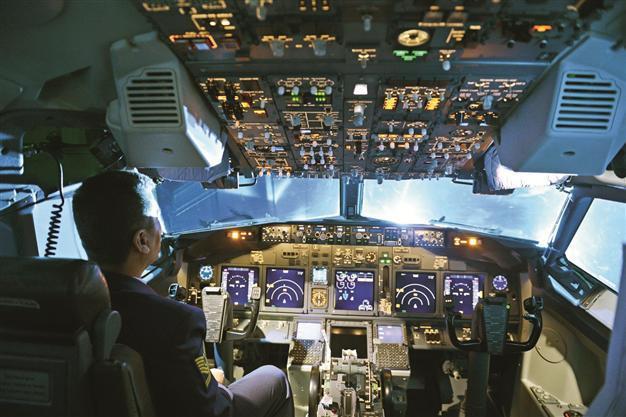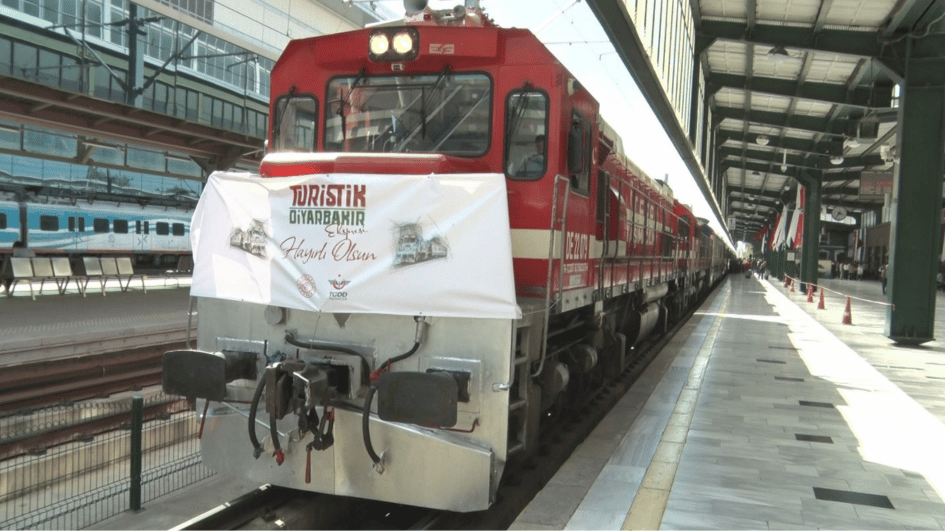Turkish defense sector bustling with whirlwind week
BURAK BEKDİL

Interior space of the Boeing-made airborne early warning and control (AEW&C) aircraft delivered to Turkey in a ceremony on Feb 21 is seen. AA photo
The seven days starting on Feb. 21 will be recalled as some of the busiest for Turkish defense procurement and bureaucracy in recent memory.The “days of thunder” took off on Feb. 21 when, after several years of delays, Boeing officially delivered to Turkey the first of a batch of four airborne early warning and control (AEW&C) aircraft, more commonly known as a “spy plane.” A top-level ceremony was attended by President Abdullah Gül, Prime Minister Recep Tayyip Erdoğan, Defense Minister İsmet Yılmaz and the entire defense bureaucracy. “Better late than never,” Erdoğan said of the delays.
The Turkish government has demanded $183 million in compensation from Boeing due to major delays in the delivery of the spy planes to the NATO ally, officials said Feb. 18.
Based on a contract slightly more than $1.3 billion signed in 2003, the original AEW&C deliveries were scheduled for 2008. While Turkish state dignitaries cheerfully celebrated the inauguration of the first aircraft, Boeing and defense bureaucrats were ironing out their last differences over the penalties for the delays. Under a compensation plan, Boeing will grant Turkey an increase in the start-up support period from an initial two to five years as well as three years of software maintenance service in addition to $32 million worth of spare parts in return for writing off the $183 million penalty and accumulated interest.
Boeing has said it will complete deliveries in 2015. The company said two more AEW&C aircraft are to be delivered this year, with the fourth in 2015. In addition to the aircraft, the program, dubbed “Peace Eagle,” includes ground support segments for mission crew training, mission support and system maintenance.
The AEW&C is based on the Boeing 737-700 airplane, a popular commercial jet. Australia and South Korea also operate the AEW&C platforms.
During the inauguration ceremony, Erdoğan said a long-dormant, major defense contract had also been signed, noting that the $3.5 billion deal with Sikorsky Aircraft for the coproduction of an initial batch of 109 utility helicopters had just been penned.
Last May, Turkey’s procurement office made an unusual announcement: Turkey “had come very close to signing the contract,” but inking the deal had since been delayed as top Turkish procurement management accused “U.S. corporate and other bureaucracy” of causing delays.
Turkey in 2011 selected Sikorsky as its partner company to lead the production of the country’s next-generation utility helicopters. Sikorsky defeated Italian-British AgustaWestland by offering its T-70, the Turkish version of its S-70 Black Hawk International.
The S-70 Black Hawk International is used by dozens of militaries, including Turkey. AgustaWestland was competing with its TUHP 149, the Turkish version of its newly developed A-149.
The first batch will be for 109 utility helicopters, but with follow-on orders, more than 600 platforms could be built at a cost of more than $20 billion, defense analysts said.
Most helicopters in the first batch will go to the military, with the Gendarmerie receiving the largest portion, and the Army, Navy, Air Force and the special forces command each getting their share. The remaining machines will go to the Police Department and to firefighters.
Simultaneously, Turkish aerospace powerhouse Turkish Aerospace Industries (TAI), Sikorsky’s prime local partner, has announced that it has signed a $491 million contract with military electronics specialist Aselsan. The deal is part of the utility helicopter program.
But if Feb. 21 was a very American and Turkish day for the defense industry, most of this week will be French, as the Turkish capital hosts an important French defense and aerospace delegation. In what looks like a follow-up visit to French President François Hollande’s January state visit to Turkey, the French delegation consists of 90 representatives from 60 defense companies and five trade associations specializing in aerospace and defense (GIFAS), naval defense (GICAN) land armaments (GICAT), as well as the National Aerospace Research Center (ONERA) and the Aerospace Valley cluster.
The participating French companies represent a whole spectrum of the industry from large groups such as Airbus, Safran and Thales, running through the gamut of equipment manufacturers, right down to very specialized SMEs. The delegate will meet Turkish counterparts in Ankara, Istanbul, İzmir, Eskişehir and Sakarya to seek new deals, partners and suppliers.
Turkey’s defense procurement office and its French counterpart, the DGA, will also organize a Turkish-French Industry Day in Ankara on Feb. 27. SaSaD, an umbrella organization for the Turkish defense industry, and GIFAS will sign a memorandum of understanding for bilateral cooperation.
GIFAS’s 321 members operate in all sectors of the aerospace industry, including civil and military aircraft, helicopters, engines, missiles and weapons, satellites and launch systems, UAV, large aerospace, defense and security systems, equipment, subassemblies and associated software applications. With 44.4 billion euros in annual turnover and 51 billion euros in orders signed in 2012, GIFAS members have a workforce of 170,000 employees.
The French delegation’s visit coincides with a critical meeting of the Defense Industry Executive Committee, the ultimate panel that oversees major procurement decisions. The committee, chaired by Erdoğan, will convene today, while officials expect the prime minister’s go-ahead for the development phase of an ambitious program that aims to build Turkey’s first indigenous fighter jet. Industry sources say a favorable decision will earn TAI a new contract for the TFX, the indigenous fighter jet Turkey has been trying to design with mentoring from Sweden’s Saab.
Defense heavyweights meet with packed agenda
In addition to discussions on the future of Turkey’s indigenous fighter jet program, the Defense Industry Executive Committee will convene to debate a number of other pending programs totaling billions of dollars.
High on the agenda is Turkey’s controversial decision last September to select Chinese firm CPMIEC for the construction of the country’s first long-range air and anti-missile defense architecture.
Defense procurement officials said Prime Minister Recep Tayyip Erdoğan would be updated on the program, with a presentation that will highlight the “merits and demerits” of the decision.
Turkey has been under increasing pressure from its Western allies, who argue that the Chinese system would not be interoperable with existing NATO and U.S. air defense assets stationed in Turkey, and that Turkish defense companies working with CPMIEC in this $3.44-billion contract could be sanctioned by the U.S. One source said Erdoğan would also be briefed on rival European and U.S. solutions, as well as an option to go for an entirely local solution proposed by Aselsan.
The Committee also will discuss Turkey’s efforts to coproduce with Japan’s Mitsubishi Heavy Industries of a local engine for the planned indigenous Turkish tank, the Altay. Turkey and Japan have been in maturing talks to develop the engine for what will become a new generation Turkish national main battle tank.
Other programs to be discussed at the meeting are a new logistical support boat and assault boats for the Navy and budgetary appropriations for research and development programs for the defense industry. Apart from Erdoğan, the Committee members are Defense Minister Ismet Yilmaz, Chief of General Staff Necdet Özel and Chief Defense Procurement Officer Murad Bayar.
















